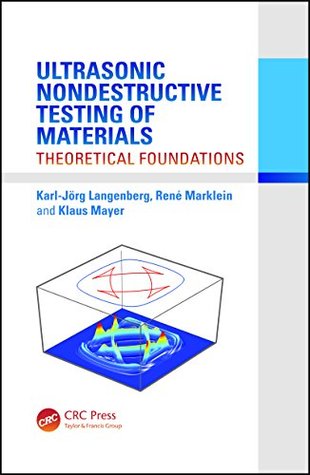Ultrasonic Nondestructive Testing of Materials: Theoretical Foundations explores the mathematical foundations and emerging applications of this testing process, which is based on elastic wave propagation in isotropic and anisotropic solids. In covering ultrasonic nondestructive testing methods, the book emphasizes the engineering point of view, yet it relies on the physics
Read Ultrasonic Nondestructive Testing of Materials: Theoretical Foundations - Karl-Jörg Langenberg file in PDF
Related searches:
2571 4946 516 2307 431 2519 3325 4702 3184 2979 272 290 2333 53 2661 289 4210 3121 2126
Introduction to non-destructive testing techniques ultrasonic testing (ut) uses high frequency sound waves most widely used in ultrasonic testing.
Ultrasonic testing is an ultrasonic inspection of materials for the purpose of detecting defects such as discontinuities of materials.
Ultrasonic nondestructive testing, also known as ultrasonic ndt or simply ut, is a method of characterizing the thickness or internal structure of a test piece.
Ultrasonic testing (ut), also known as ut testing, ultrasonic non destructive testing and ultrasonic ndt, can locate surface and internal defects in raw materials.
Radiographic and ultrasonic weld inspection are the two most common methods of non-destructive testing (ndt) used to detect discontinuities within the internal.
Ultrasonic testing method (ut) uses high frequency sound waves to conduct product examinations and make measurements.
Oct 18, 2020 request pdf time reversal techniques in ultrasonic nondestructive testing of scattering media time reversal techniques are adaptive.
Ultrasonic methods have been very popular in nondestructive testing and characterization of materials.
For over sixty years, the nondestructive testing (ndt) or nondestructive evaluation (nde) of materials has been an area of continued growth.
Ultrasonic testing (ut) is a group of nde techniques that use short, high- frequency ultrasonic waves to identify flaws in a material.
Mar 30, 2020 pdf the possibility to use ultrasonic nondestructive testing for the diagnosis and characterization of decay in building materials due to salts.
For example, ultrasonic testing is based on the propagation of ultrasonic sound waves in a material and magnetic particle testing uses very small particles which.

Post Your Comments: